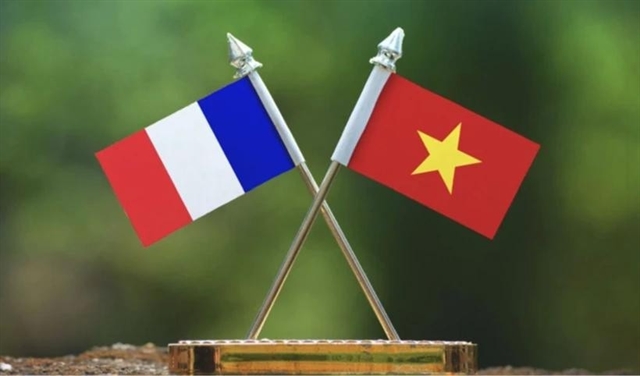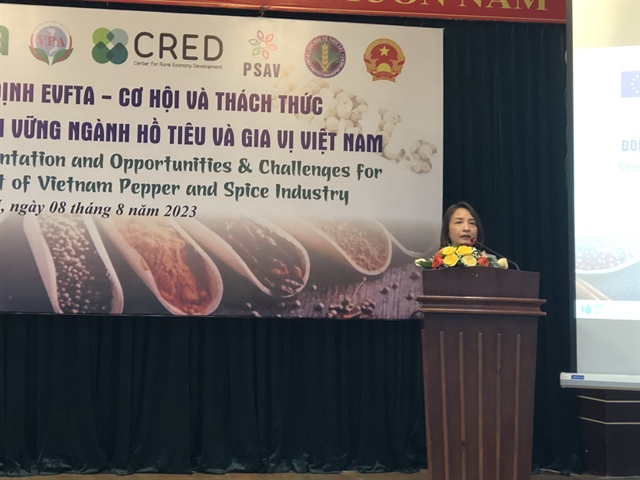 Economy
Economy


|
| Hoàng Thị Liên, chairwoman of the Việt Nam Pepper and Spice Association, speaks at the seminar in HCM City on August 8. — VNS Photo |
HCM CITY — Pepper growers and exporters need to focus on improving quality and diversifying their products to sustain the country’s position as the world’s largest producer and exporter of the spice, according to the Việt Nam Pepper and Spice Association.
At a recent seminar on “the EU - Việt Nam Free Trade Agreement Implementation and Opportunities and Challenges for Sustainable Development of Vietnam Pepper and Spice industry” in HCM City, Lê Việt Anh, chief of the association office, said the trade deal that took effect in 2020 cut tariffs on certain Vietnamese spices and herbs such as ground and crushed pepper, chilli, vanilla, and cloves to zero when exporting to the EU, but remained largely untapped.
But he said it was due to the EU’s strict requirements related to quality, traceability and food safety.
Trần Như Trang, an expert at the Swiss Import Promotion Programme, expressed a similar view, saying only two pepper products (crushed and ground pepper) had benefited from the zero tariff, with their exports to the bloc rising by 50 per cent.
Anh said pepper exports to the EU decreased this year though cinnamon exports increased by 26.1 per cent.
Compared to Brazil, Việt Nam continued to enjoy advantages in the short term, but in the long term it needed to improve quality and exploit different market segments, he said.
Exporters needed to monitor the market closely since requirements changed frequently, he said.
So, in addition to their price competitiveness, Vietnamese enterprises also needed to meet the EU’s stringent criteria to maintain their position in the market, he said.
Trang said EU customers were increasingly interested in spices that are good for health such as ginger, black pepper, cinnamon, clove, and black cumin seeds, certified organic products and value-added ones.
To achieve success in the EU market, businesses must meet technical requirements such as contamination test and heat treatment, authenticity and purity standards, sustainable sourcing, and so on.
Hoàng Thị Liên, chairwoman of the Việt Nam Pepper and Spice Association, said with sustainable production and consumption becoming increasingly important in the eyes of consumers, the association had a plan to develop the sector in a sustainable manner.
It was set to enhance linkages between businesses and co-operatives to provide training to pepper farmers, call on farmers to reduce the use of pesticides and other plant protection chemicals, increase the use of bio-products, work to ensure gender equality and increase opportunities for women to take part in the pepper supply chain, she said.
The association has set targets for pepper and other spice export of US$1.8 billion by 2025 and $2.5-3 billion by 2030. — VNS




